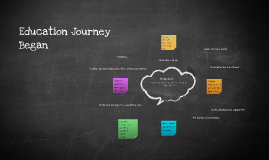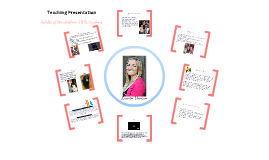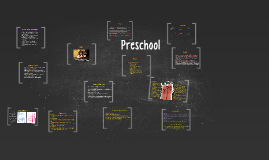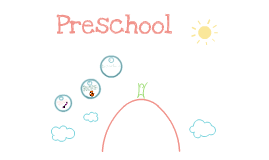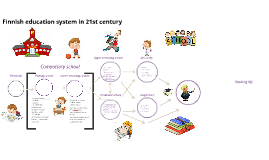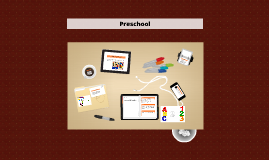Preschool
Transcript: a) loss of baby fat and growth of muscle b) jaw widens to accomodate permanant teeth c) a trend to show more independent behavior d) skeletal system fully matures Lying Sex-education Masturbation Changes that occur during preschool years (age 3-6). Select all that apply i clicker 2 Morality and Spirituality Erikson - use of "no" and "why" starting at 3 Neurological and Sensory Characteristics Ages: 3-6 Height: average growth of 2.5"-3" a year Weight: average weight gain of 4-5 pounds a year All 20 primary teeth by 3 Vision is 20/20 by 4 Sleep 11-13 hours a day on average Building self-esteem Promoting a loving and nurturing environment Routine and rituals provide structure and a sense of time Setting limits and remaining consistent is ideal healthy behavior Promotion through act of play: writing, coloring, finger painting, utilizing toys for their appropriate purpose Begins cooperatively playing- defined roles, make up rules, and assign jobs within a play group Incorporating props in pretend play Encouraging physical activity can comprehend right and wrong develops a conscience moral standards developed from adult influence able to deal with anger lying begins at this age understands concept of give and take in relationships may project parents/caregivers feelings as God's ex. "if mommy's angry then God's also angry" When performing a preschool assessment, what behaviors/actions should the nurse anticipate? a) happy and excited to be poked and prodded b) fear of intrusing procedures c) like to sit still and follow directions d) no fear of the unknown Preschool Cultural Influences Developing skills of cooperation, sharing, kindness, affection, helping others, and making friends Strong emotions, may be defiant, bossy, and show more independence Experience a broad range of emotions and learn how to control those emotions and behaviors Developing sense of identity and recognize genders, as well as right and wrong Thrive on 1-to-1 communication with a parent 2-4 pre-operational substage preconceptual phase: egocentric and able to approach a problem from single point of view, begins to count and engage in fantasy play 4-7 pre-operational substage intuitive phase: classify and relates to objects, knows rights and wrongs, tolerates differences but doesn't understand them, curious, may begin to question parents values i-clicker Organ Systems Fully developed hearing Smell and touch continuing development Taste is less discriminating; more prone to accidental ingestion Vision progresses, should be equal bilaterally. By age 5 vision is 20/40 or 20/30. Color vision is developed by this age. Age 3: can tell a simple story and discuss past events Age 4: can tell a story that is easy to follow understands 75% of adult speech engages in make believe with language can follow a 3 part command Age 5: talks about past present and future speech is generally gramatically correct can recite name and address *stuttering may occur during normal development due to faster mental rate than ability to express. Especially when stressed or excited. Centers for Disease Control and Prevention (2009, August 4). Clinical Growth and Charts. Retreived from: http://www.cdc.gov/growthcharts/clinicalcharts.htm Medline Plus (2012, November 9). Preschooler Development. Retrieved from: http://www.nlm.nih.gov/medicineplus/ency/article/002013.htm Ricci, S. S., & Kyle, T. (2013). Growth and Development of the Preschooler. Maternity and pediatric nursing (2nd ed., ). Philadelphia: Wolters Kluwer Health/Lippincott Williams & Wilkins. Strausbaugh, B. (2013, June 2). Preschool Growth and Development, NUR 113. YouTube. Retrieved July 24, 2014, from Motor Skills Gross Motor Skills Should be more skilled at running, jumping, throwing and kicking Should be able to go up and down stairs should be able to catch a bounced ball Tricycle riding at 3 hopping on one foot at 4 Doing heel-to-toe walk at 5 able to walk on tip-toes Delayed growth and development Imbalanced nutrition less than body requires Interrupted family processes Readiness for enhanced parenting Risk for delayed development Risk for caregiver strain Risk for disproportionate growth Risk for injury Reflection Nursing Diagnoses Video Initiative vs Guilt (ages 3-6) likes to please parents makes up games acts our roles, real and imaginary sexual identity develops consience feels remorse for wrong choices cooperation and negotiation skills developing Nurses Role Fine Motor Skills Age 3: Draw a circle, draws people with 3 parts, beginning use of scissors, self dress with supervision Age 4: draws a square, using scissors to cut a straight line, putting on close properly, manages a spoon and fork Age 5: spreads peanut butter with a knife Age 6: ties shoe laces, writes letters, cuts well with scissors Promotion of Healthy Growth and Development Neurological complete bowel and bladder control, eustachian tubes short and straight Cardiac/Circulatory HR decreases, BP increases slightly, may have innocent murmur






